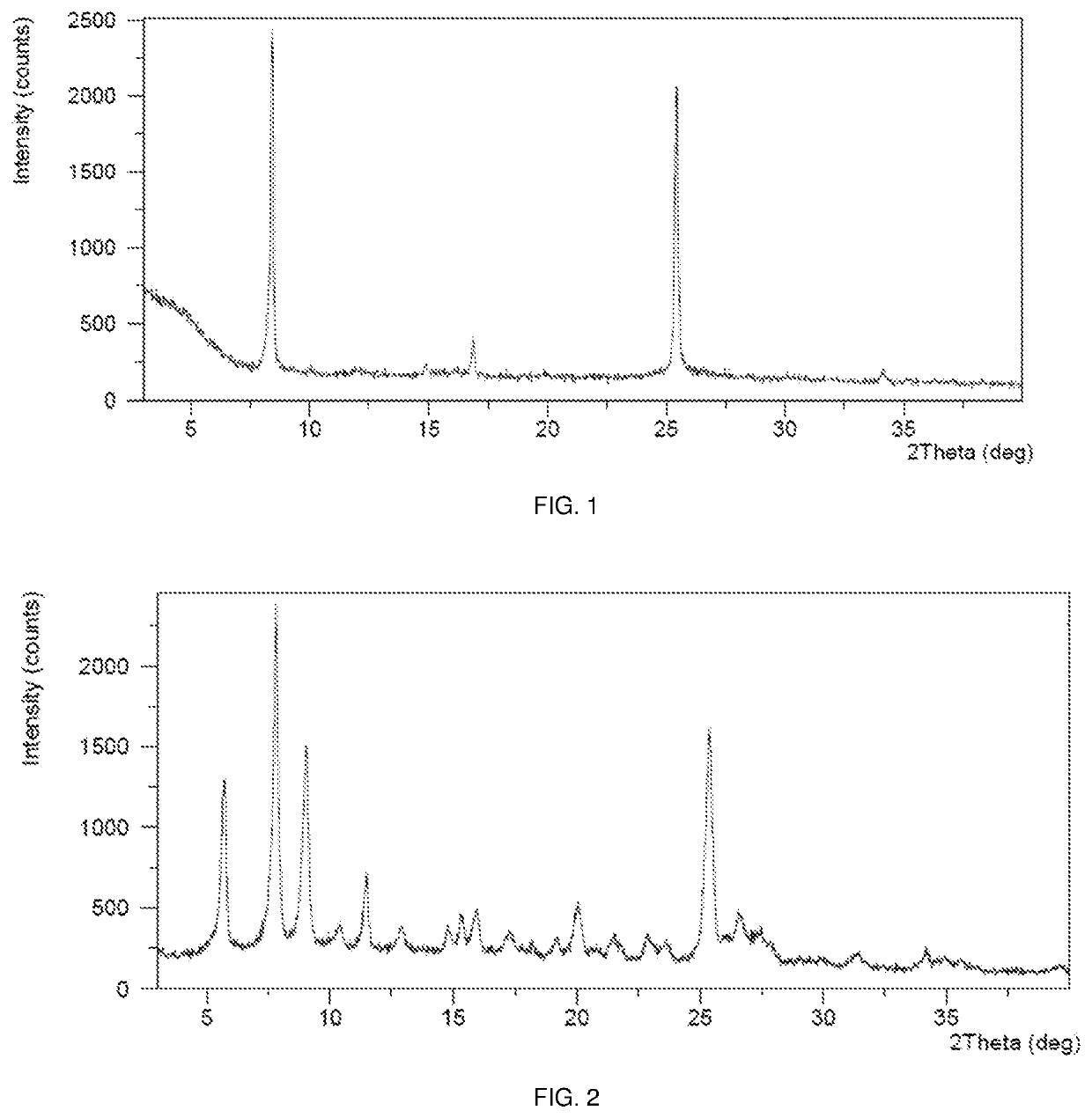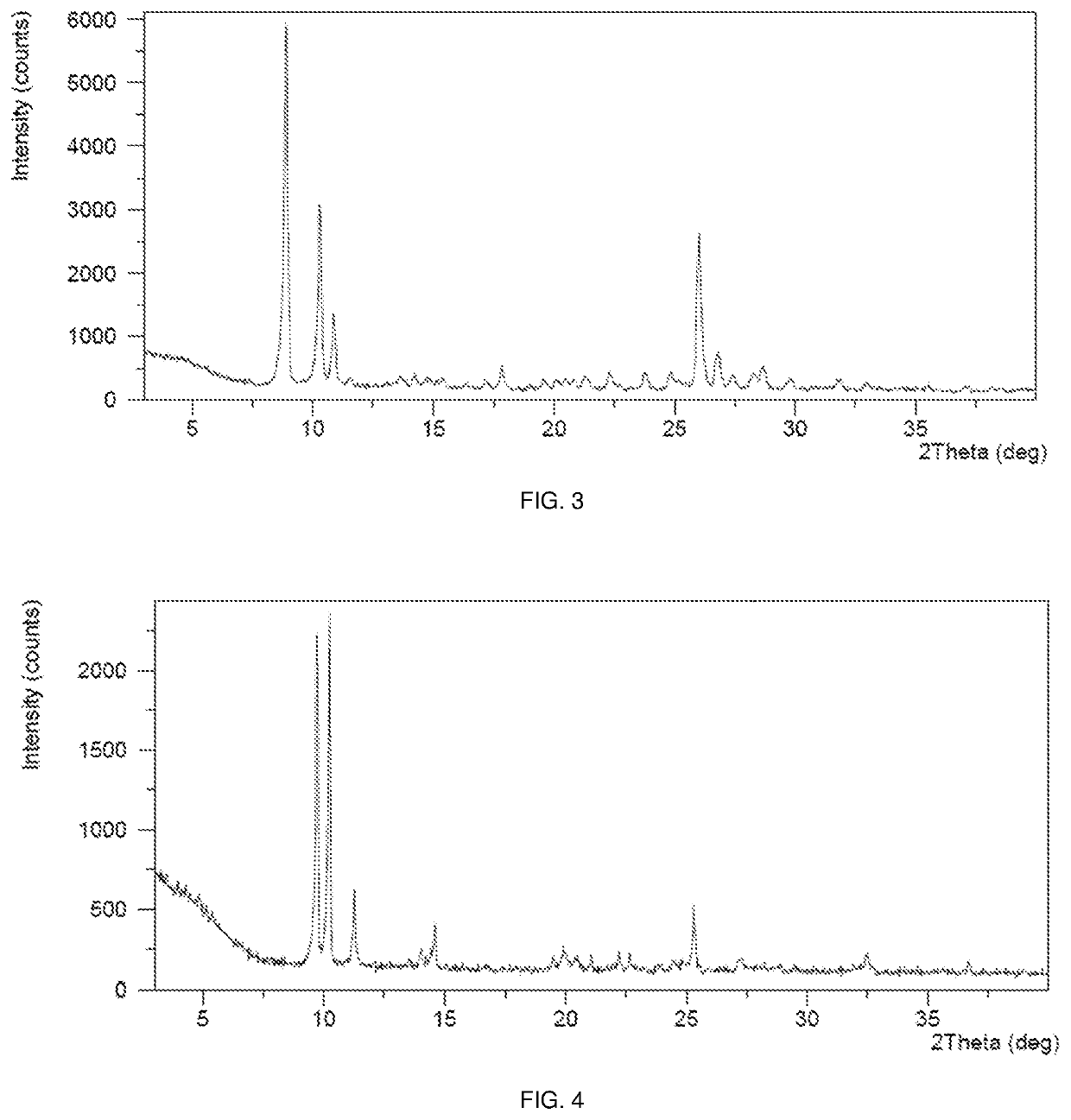Polymorphs of sepiapterin and salts thereof
a sepiapterin and polymorph technology, applied in the field of polymorphs of sepiapterin and, can solve the problems of limited effect, sepiapterin has limited stability in solutions, and certain forms of solid sepiapterin degrade under oxidative conditions
- Summary
- Abstract
- Description
- Claims
- Application Information
AI Technical Summary
Benefits of technology
Problems solved by technology
Method used
Image
Examples
example 1
[0260]This example demonstrates a preparation of the crystalline Form B of sepiapterin free base in accordance with an embodiment of the invention.
[0261]73.2 mg of starting material sepiapterin was weighed into a 20-mL glass vial. 2.5 mL of N-methyl pyrrolidone (NMP) was added to dissolve the starting material. The solution was filtered into a new vial. 17 mL of acetonitrile (ACN) was added step-wise, with the sample stirring at RT with a rate of ˜1000 rpm. The suspension was stirred at RT for 2 hrs. The resulting precipitate was isolated by centrifugation and dried in vacuum at RT for 3 hrs to obtain crystalline Form B of sepiapterin free base.
example 2
[0262]This example demonstrates a preparation of crystalline Form C of sepiapterin free base in accordance with an embodiment of the invention.
[0263]100.4 mg of starting material sepiapterin was weighed into a 20-mL glass vial. 2 mL of ACN was added to form a suspension, which was stirred at 50° C. with a rate of ˜1000 rpm. The resulting solids were isolated by centrifugation for 2 minutes through a 0.25 □m pore size centrifugation filter and drying at RT for approximately 12 hours to obtain crystalline Form C of sepiapterin free base.
example 3
[0264]This example demonstrates a preparation of the crystalline Form D of sepiapterin free base in accordance with an embodiment of the invention.
[0265]200.1 mg of starting material sepiapterin was weighed into a 20-mL glass vial. 5 mL of H2O was added to form a suspension, which was stirred at 50° C. with a rate of ˜1000 rpm. The resulting solids were isolated by centrifugation for 2 minutes through a 0.25 □m pore size centrifugation filter. One-half of the collected solids were dried at RT for approximately 12 hours at atmospheric pressure to obtain crystalline Form D of sepiapterin free base.
PUM
| Property | Measurement | Unit |
|---|---|---|
| diffraction angle 2θ | aaaaa | aaaaa |
| diffraction angle 2θ | aaaaa | aaaaa |
| diffraction angle 2θ | aaaaa | aaaaa |
Abstract
Description
Claims
Application Information
 Login to View More
Login to View More - R&D
- Intellectual Property
- Life Sciences
- Materials
- Tech Scout
- Unparalleled Data Quality
- Higher Quality Content
- 60% Fewer Hallucinations
Browse by: Latest US Patents, China's latest patents, Technical Efficacy Thesaurus, Application Domain, Technology Topic, Popular Technical Reports.
© 2025 PatSnap. All rights reserved.Legal|Privacy policy|Modern Slavery Act Transparency Statement|Sitemap|About US| Contact US: help@patsnap.com



